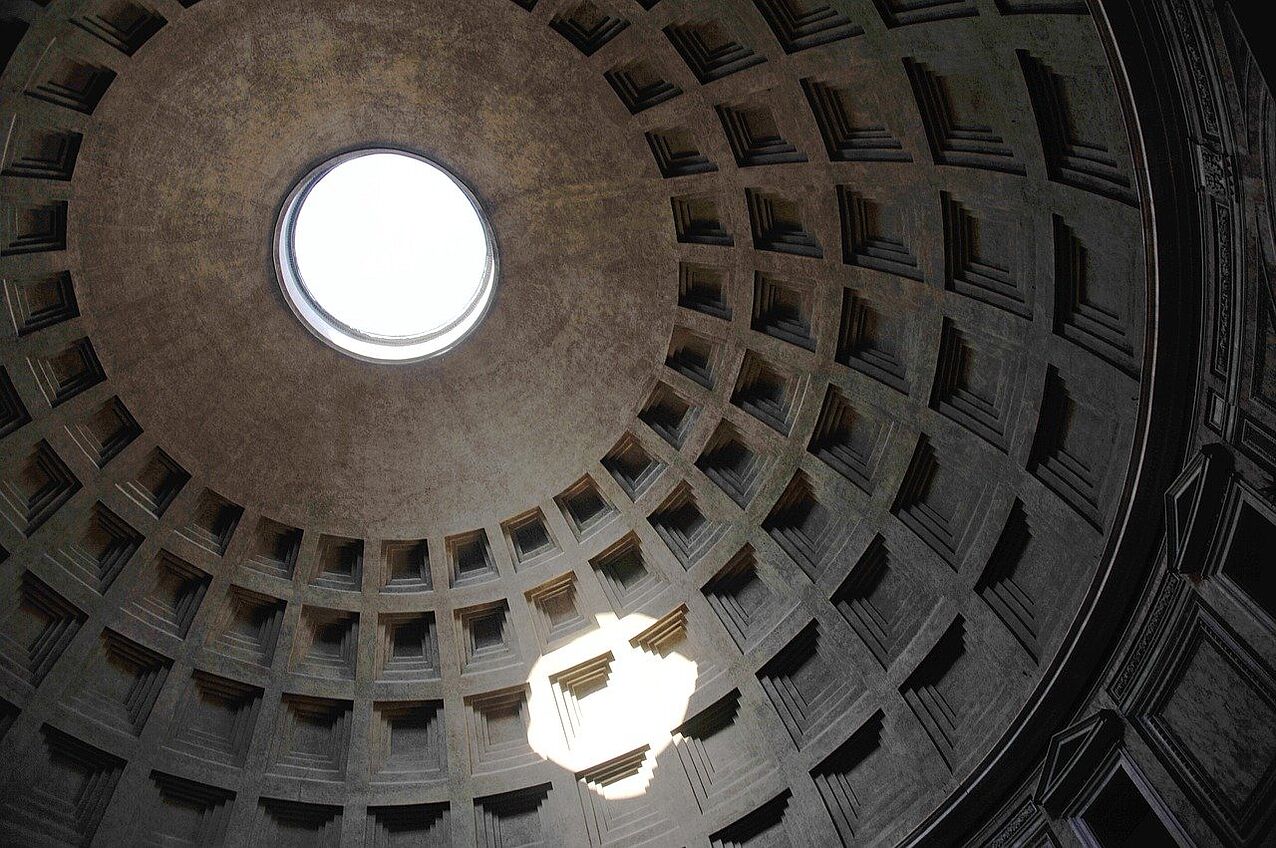330,000 cubic meters were used in the Burj Khalifa alone, the tallest building in the world. With around 100 million cubic meters processed every year, concrete is the most important building material in Germany. It is not just the architects in Dubai and their German colleagues that rely on it. Around the world, the artificial stone from the professional building industry is now indispensable. Private users can also find a broad offering of ready-to-use concrete products. The history of concrete construction is diverse. We have put it in a nutshell for you: Short, entertaining and informative.

An ancient material ...
Concrete is inextricably linked with the architecture of the 20th century. What few people know: The old Romans built their structures from an artificial stone ("opus caementitium"), which was very similar to modern concrete in its composition. This was primarily different from the 10,000 year old lime mortar, which had been used up until this point, due to its water insolubility. The Romans used mainly volcanic rock in their concrete mixtures – and thus discovered the first hydraulic binding agents. We still owe admirable architectural treasures such as the Pantheon in Rome to this. With its 43-meter diameter roof dome made of Roman concrete, it has lasted for 2,000 years.
... and its modern renaissance
An invention of two Britons in the first half of the 19th century introduced the modern age of concrete. The tradesmen from southern England burned clay and lime at high temperatures to the melting point and allowed the mixture to cool. The resulting stone-like bricks were then ground into a fast-drying, powder-like binding agent, which to this day is used as "Portland cement."Reinforced concrete triggered a revolution in construction starting in the 1850s. Concrete does withstand a lot of pressure. However, it is relatively brittle and gives into tensile loads, which is why a reinforcement was needed. Reinforced concrete is a composite of concrete and reinforcing steel. It simultaneously has a high tensile strength and compressive strength. Large slab spanned widths can thus be realized without a vaulted design.
From a construction material to a high-tech material
Due to the increasingly better calculation possibilities, evolving formwork technologies and new formulas, it has been possible to make concrete increasingly material-saving over time. That is why fiber concretecan be made to have extremely thin walls, because its reinforcement made from corrosion-free short fibers do not require any minimum overlap, unlike steel. Composites made of a flowable, fine concrete matrix and alkali-resistant glass or plastic fibers have also been successfully in use since the 1980s. These textile concretes are the high-tech materials in construction. They can absorb large loads and also only require a small concrete overlap, because they are also corrosion-free This reduces the thickness of components.
Aesthetically sophisticated and innovative
In the past, contemporary critics often considered as a clue of failures. Today, the artificial stone also stands for aesthetically sophisticated building projects. Thanks to modern methods of surface treatment, exposed concrete has long been used as more than just a construction material. It is also trendy in cladding, as a floor covering or in furniture construction. With new architectural challenges and innovative developments, such ascarbon concrete, the more durable and lighter-weight alternative to reinforced concrete, concrete construction will certainly continue to have an exciting story moving forward – and a sustainable one to boot.




